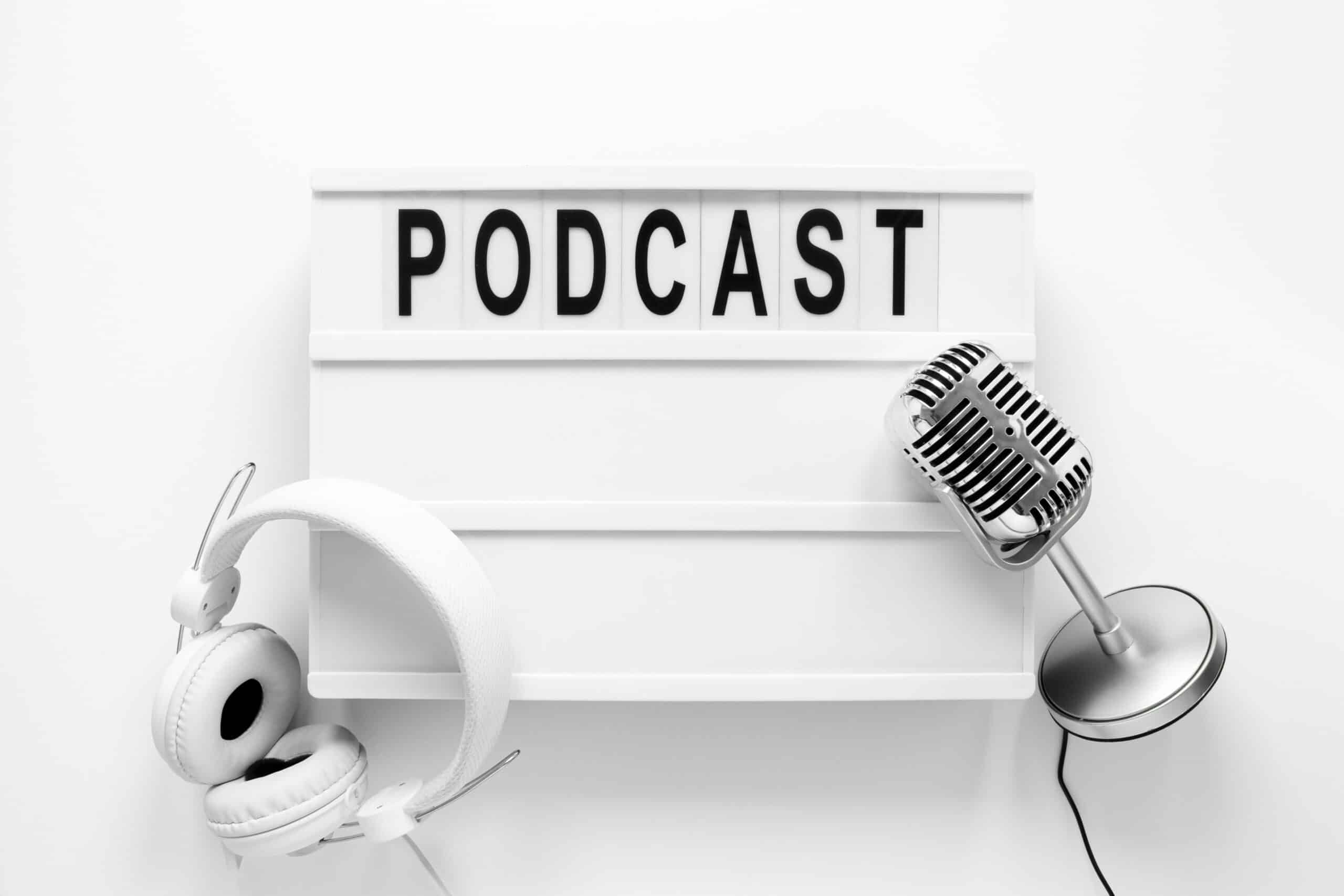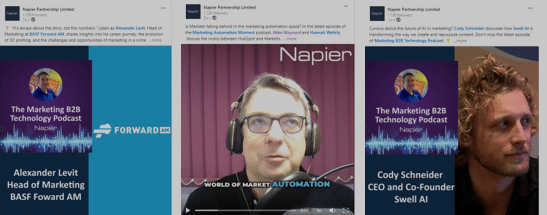Podcasting 101: 7 Steps to Launching Your Podcast
In today’s digital landscape, podcasts have evolved from a niche medium to a powerful platform, particularly in the B2B sector. In this blog, we will outline the essential steps to help you kickstart your own successful podcast and harness the power of podcasting to engage with audiences meaningfully.
Why Start a Podcast?
Podcasting offers a unique way to capture the attention of your target audience for an extended period. In B2B, podcasts typically range between 15 to 45 minutes, providing ample time for delivering value to listeners. Podcasts can easily fit into the daily routines of your audience, making it an excellent way to engage people during commutes or other activities.
But why start a podcast in the first place? It’s important to have clear objectives. For example, Napier launched their own podcast, Marketing B2B Technology, to have deeper, more insightful conversations with industry leaders. Whether your goal is educating your audience, showcasing your expertise, or building relationships, the focus should be on delivering quality content.
Seven Steps to Launch a Podcast
Are you thinking about launching your own podcast, but not sure where to begin? You're in the right place! So how do you get started? Read on to discover our 7 steps to make your podcasting dreams a reality!
Planning and Strategy: The foundation of any successful podcast is thorough planning. Consider your goals carefully, remembering that quality trumps quantity in podcasting. Even with a small but targeted audience, a podcast can be a highly effective tool. Before you begin, you should answer three critical questions:
- Why do you want to start a podcast?
- Why will people listen?
- Why is podcasting the best channel for your message?
Choosing a Topic: Your podcast topic should be sustainable and engaging enough to carry through multiple episodes and even multiple seasons. A podcast season may have several episodes with a variety of different topics being promoted.
Podcasts thrive on conversation, so ensure that your subject matter can be discussed in-depth without needing visual aids. You’ll also need a clear, descriptive title to make your podcast easily discoverable.
Our client Microchip provides a great example of a podcast series that offers a range of topics over multiple episodes. Their podcast series ‘Microchip is…’ showcases the full spectrum of their product lines covering Aerospace and Defense, Clock and Timing, SiC, PoE, Power and Analog, FPGA, Automotive and Innovative Touch.
Selecting a Format: Most successful podcasts follow one of two formats: interviews or panel discussions. These are both engaging and relatively easy to manage. Decide whether you’ll record face-to-face or remotely and keep the format simple. Establish a consistent structure, such as intro music, interviews, and outro messages.
Understanding Your Audience: Focus on targeting existing podcast listeners who are already familiar with the medium. Consider your audience’s behaviour and consumption habits. This will help inform your decision on episode length and frequency.
A great way to identify your audience personas is to have listeners review your podcast. Our advice is to add a call to action at the end of each podcast episode, both verbally and in the podcast description, to encourage people to leave their own reviews and, if so inclined, recommend your podcast to their audience.
Recording and Editing Tools: The technical side of podcasting can seem daunting, but it doesn’t need to be. All you need is a good microphone, a stable internet connection, headphones, and recording software. Tools like Squadcast or Riverside can be great for recording and tools like Descript are great for editing, which simplifies the process by allowing you to edit audio by modifying the transcript.
Marketing Your Podcast: Once your podcast is live, promoting it is crucial. Social media is particularly effective, especially when you can leverage your guests’ networks. Collaborating with other podcasters in your niche by inviting them onto your show can also help you tap into a ready-made audience. Other marketing options include press releases, Google Ads, blogs and newsletters.
At Napier, we use a range of AI tools to assist with our social media promotion of the podcasts. One of the tools we use is Swell AI. This platform can turn audio or video into transcripts, clips, show notes, articles, summaries, titles, newsletters, social posts, midroll ads, intro scripts, and more, providing an effective and easy approach to promoting.
Maintaining Consistency: Podcast growth is slow and steady, often taking 15-20 episodes to see significant listener growth. The key to success is consistency. Don’t be discouraged if your early episodes don’t attract large numbers; keep producing high-quality content, and your audience will grow.
Bonus Tips for Hosting
As well as the seven steps above, here are a few bonus tips you can use alongside these to further perfect your podcast experience:
- Preparation is Key: Research your guest and plan a flexible structure for the interview. Avoid rigid scripts and focus on creating a natural conversation.
- Listen Actively: Tailor your follow-up questions based on the guest’s responses, which leads to more dynamic and engaging discussions.
- Let the Guest Shine: The majority of the talking should come from your guest. The host’s role is to guide the conversation and avoid talking over guests.
- Provide Clarity: Encourage your guests to explain industry jargon or complex ideas for listeners who may not be as familiar with the topic.
Conclusion
Podcasting is a highly effective way to connect with a B2B audience, but it requires thoughtful planning, dedication, and consistency. By following these seven steps you’ll be well on your way to launching a podcast that resonates with your audience and supports your business goals. Whether you're promoting your podcast through social media or inviting industry leaders as guests, the key is to create valuable content that people want to hear.
To hear more tips about kickstarting a podcast, listen to our webinar here.





